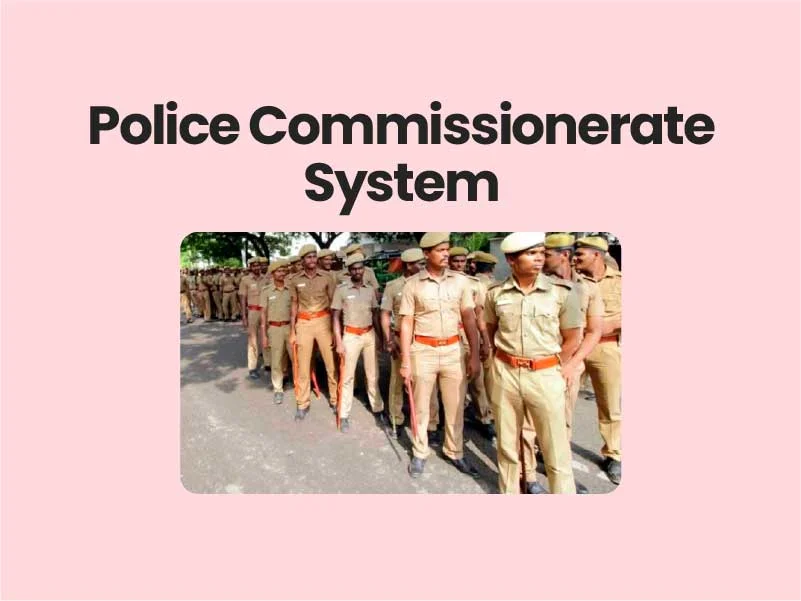
Police Commissionerate System
UP govt has approved the commissionerate system of policing state capital Lucknow and Noida . This system gives more responsibilities including magisterial powers to IPS officers of the rank of Inspector general of Police who are posted as Commissioner. Under the 7th Schedule of the Constitution, ‘Police’ is under the State list, meaning individual states typically legislate and exercise control over this subject.
Significance:
- Many states have adopted the commissionerate system at the metropolitan level to facilitate faster decision making in solving complex urban centric issues.
- According to a BPRD report 61 cities in 15 states had this system in place by January , 2018 .
- In the arrangement in force at the district level, a ‘dual system’ of control exists, in which the Superintendent of Police (SP) has to work with the District Magistrate (DM) for supervising police administration.
- At the metropolitan level, many states have replaced the dual system with the commissionerate system, as it is supposed to allow for faster decision-making to solve complex urban-centric issues.’
- In the commissionerate system, the Commissioner of Police (CP) is the head of a unified police command structure, is responsible for the force in the city, and is accountable to the state government.
- The office also has magisterial powers, including those related to regulation, control, and licensing.
- Sixth National police Commission report released in 1983 had recommended introduction of commissionerate system in cities with a population of 5 lakh and above.
- Later in 2005 a draft Model Police Act framed by a committee set up by the Union Home Ministry also made similar recommendation saying metro cities and major urban areas with a population of 10 lakhs or more should have a Police Commissioner System.
Benefit:
- Single point of responsibility
- Unified organisational command
- Specialisation in training and personnel management
- Complete clarity on chain of command
- Accountable to the state government for his performance
Challenges:
- Overlapping Jurisdiction
- Lack of Public Confidence in Police
- Giving More Power to Police
Way forward:
- To setting up of a stronger municipal architecture
- Development of Civil Society
- As public order and police are part of the State List in the Seventh Schedule of the Constitution, it is required on part of states to carry out necessary police reforms.
Enroll today with the best civils service academy and take your first step towards your Civils journey.
Feel free to reach out to us for any inquiries, collaborations, or support. We’re here to help.

